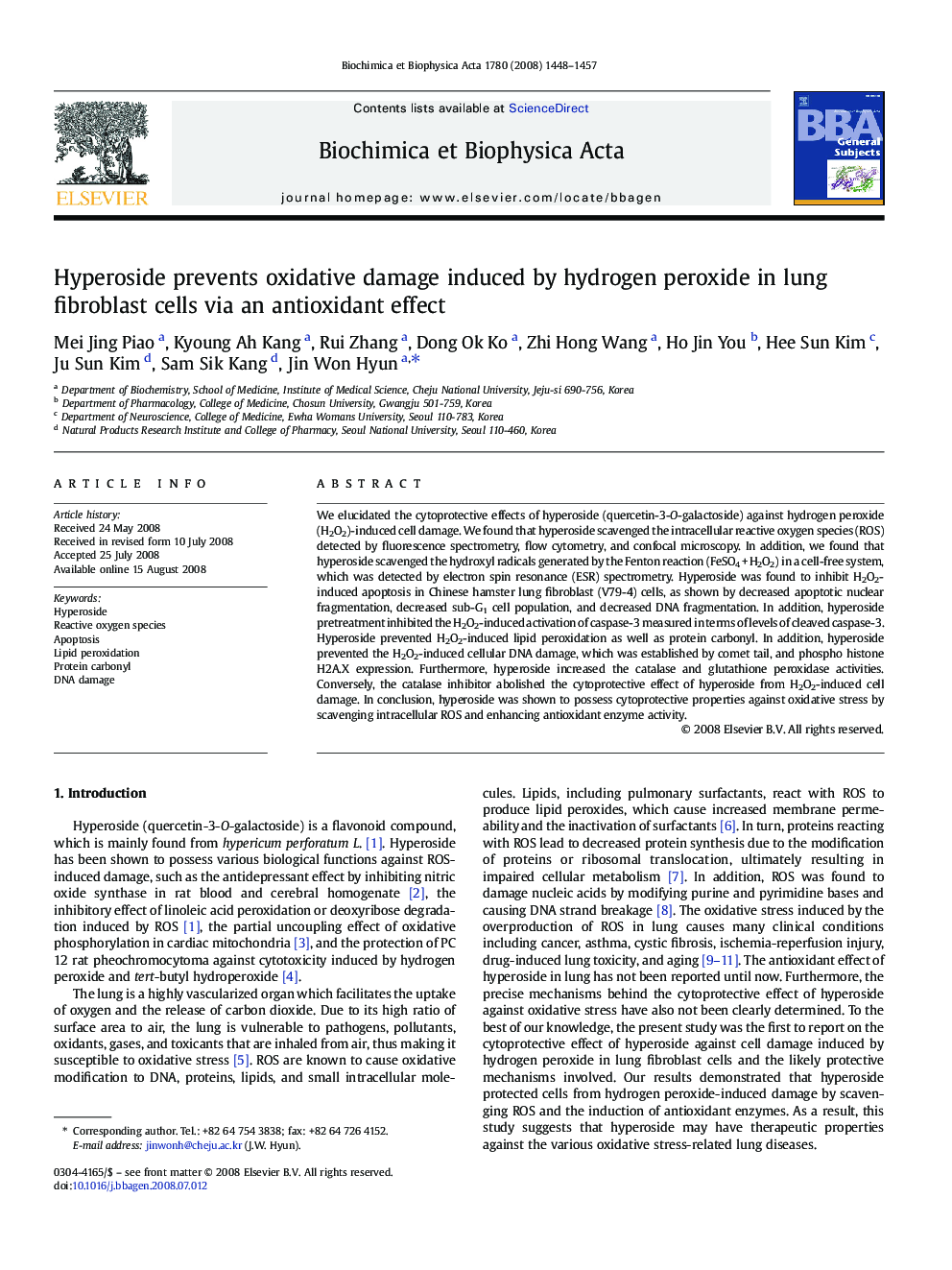| Article ID | Journal | Published Year | Pages | File Type |
|---|---|---|---|---|
| 1948158 | Biochimica et Biophysica Acta (BBA) - General Subjects | 2008 | 10 Pages |
We elucidated the cytoprotective effects of hyperoside (quercetin-3-O-galactoside) against hydrogen peroxide (H2O2)-induced cell damage. We found that hyperoside scavenged the intracellular reactive oxygen species (ROS) detected by fluorescence spectrometry, flow cytometry, and confocal microscopy. In addition, we found that hyperoside scavenged the hydroxyl radicals generated by the Fenton reaction (FeSO4 + H2O2) in a cell-free system, which was detected by electron spin resonance (ESR) spectrometry. Hyperoside was found to inhibit H2O2-induced apoptosis in Chinese hamster lung fibroblast (V79-4) cells, as shown by decreased apoptotic nuclear fragmentation, decreased sub-G1 cell population, and decreased DNA fragmentation. In addition, hyperoside pretreatment inhibited the H2O2-induced activation of caspase-3 measured in terms of levels of cleaved caspase-3. Hyperoside prevented H2O2-induced lipid peroxidation as well as protein carbonyl. In addition, hyperoside prevented the H2O2-induced cellular DNA damage, which was established by comet tail, and phospho histone H2A.X expression. Furthermore, hyperoside increased the catalase and glutathione peroxidase activities. Conversely, the catalase inhibitor abolished the cytoprotective effect of hyperoside from H2O2-induced cell damage. In conclusion, hyperoside was shown to possess cytoprotective properties against oxidative stress by scavenging intracellular ROS and enhancing antioxidant enzyme activity.
